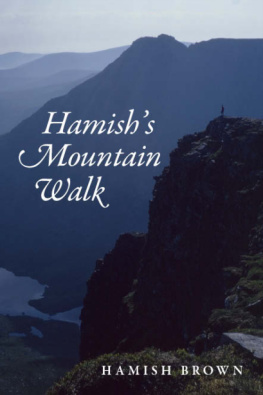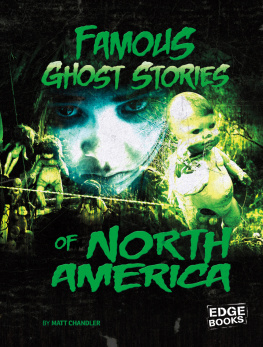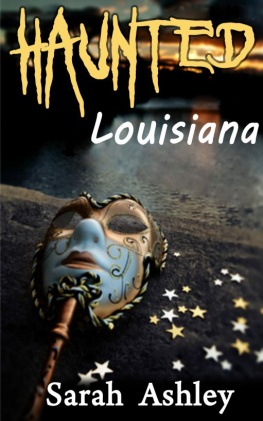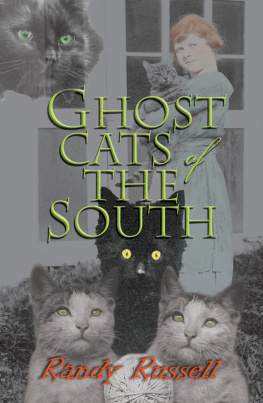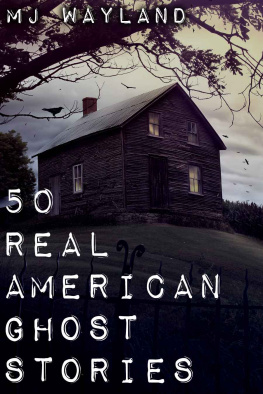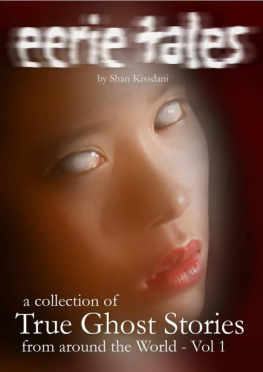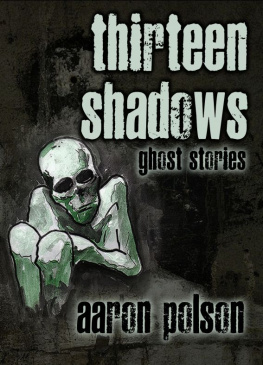SHADOWS AND CYPRESS
SHADOWS AND CYPRESS
Southern Ghost Stories
ALAN BROWN

www.upress.state.ms.us
Copyright 2000 by University Press of Mississippi
All rights reserved
Manufactured in the United States of America
08 07 06 05 04 03 02 01 4 3 2

Library of Congress Cataloging-in-Publication Data
Brown, Alan, 1950 Jan. 12
Shadows and cypress : southern ghost stories / Alan Brown.
p. cm.
Includes bibliographical references and index.
ISBN 1-57806-270-5 (cloth : alk. paper)
ISBN 1-57806-271-3 (pbk.: alk. paper)
1. GhostsSouthern States. I. Title.
BF1472.U6.B745 2000
British Library Cataloging-in-Publication Data available
CONTENTS
PREFACE
The concept for this book had its origin in the research that I did for my first collection of oral ghost tales, The Face in the Window and Other Alabama Ghostlore. After recording stories from members of the audiences who attended a series of lectures I presented on ghost tales in 1992-93 for the Alabama Humanities Foundation, I began collecting stories from my own students at the University of West Alabama. After a year of collecting, it became apparent that I had far more stories than I needed for my book of Alabama ghost tales. Many of the stories that I could not use had come from students who lived in other southern states. However, simply having a source of southern ghost tales at my disposal was not enough to convince me that such a book should be written. My original reason for editing a collection of Alabama ghost tales was to fill a gap in the states folklore by producing the first scholarly collection of oral ghost stories, and I applied the same reasoning before embarking on my next project. When I discovered while collecting books for my annotated bibliography that only one book of oral ghost tales from the entire South had been publishedW. K. McNeils Ghost Stories from the American South (1985)I decided not only was there room for a similar collection but also that a single volume could not possibly do justice to the hundreds of stories that comprise Southern ghostlore. In addition, I realized that because ghost tales are still being told and generated by young people throughout the South, there were probably many new stories that had been circulated in the decade that had elapsed since the publication of McNeils book.
After submitting the manuscript of Face in the Window to the publisher in 1994, I began working on my next book in earnest. I decided to search for stories from the same southern states that W. K. McNeil included in his book: Alabama, Arkansas, Florida, Georgia, Kentucky, Louisiana, Mississippi, North Carolina, South Carolina, Tennessee, Texas, and Virginia. Realizing that I would have to supplement the stories I had collected on my own, I applied for a research grant from my own university to finance my trips to various archives and libraries throughout the South. It turned out that the best source for oral ghost tales from the American South was the Library of Congress. Almost half of the stories included in this volume were collected by employees of the Federal Writers Project, a subsidiary of the Works Progress Administration, between 1936 and 1941. Even though copies of these tales can be found in state archives, it made more sense to me to gather what I needed from one central location rather than travel to all the southern states. Still, in order to produce a representative collection of tales from all of the southern states, I had to look for other sources. Most of the tales I included from Virginia came from the Alderman Library because copies of the WPA stories from Virginia could not be found in the Library of Congress. I also had to look elsewhere for stories from Florida, Kentucky, Tennessee, and, surprisingly, Louisiana. Nineteen stories were taken from the Manuscripts and Folklife Archives of Western Kentucky University. The archives were an ideal source of oral ghostlore because they contains hundreds of folktales that had been collected by students from the folklore classes at the university. These stories, which have been recorded according to the accepted scholarly standards, are available to scholars for research. I also received a few ghost tales from the Ozark Folk Center of Mountain View, Arkansas. Fortunately, I was able to collect stories from Florida, Tennessee, and Louisiana from students and faculty members at the University of West Alabama.
Because many of the WPA interviewers paid little attention to such matters as comparative data or biographical information on the informants and sometimes even rewrote the stories they had collected, I gave preference to those tales that had been collected by trained scholars or by folklore students. For example, even though Mississippi produced more than a hundred WPA ghost tales, I opted to use tales that I had collected from people I knew from my hometown of Meridian, Mississippi. Nevertheless, a case can still be made for including WPA material in a scholarly folklore collection. Although some interviewers, like those who worked for the North Carolina Writers Project, transformed what were originally fairly simple, straightforward texts into artistically complete works, quite a few WPA stories, like those collected from Arkansas, Georgia, and South Carolina, do reflect a concern for the dialect traits of their informants. Even those stories that have been rewritten are of value because they may be the only existing sources of eighteenth- and nineteenth-century folklore in certain areas.
Because my first collection of oral ghost tales was well received by folklorists, I decided to employ the same scholarly methods in the present volume. With the exception of the WPA tales, which are in the public domain, all the stories were used with the written permission of the informants. The stories that I collected were transcribed exactly as they were told to me in tape-recorded sessions. All of the grammatical errors and dialect traits common to southern states (for instance, the dropping of inflected endings such as -ing) have been preserved in the printed form. Although I reproduced most of the WPA dialect stories exactly as they were written by the interviewers, I did change the stories when a dialect spelling of a certain word did not seem to be warranted (for example, sed instead of said or wen instead of when). I also allowed my informants to dictate the organization of their stories. In some cases, for example, background information about a particular landmark is given in the end instead of in the beginning. Certain concessions were made for the general reader as well. All of the notes have been placed in the back of the book instead of at the end of the stories to facilitate reading. I also gave titles to the stories because storytellers do not normally attach titles to their tales. I added my own titles to those WPA stories that either did not have titles or that had very generic titles (for instance, The Haunted House or A Ghost Story). For the sake of balance, I have attempted to include approximately the same number of stories from each state (between fourteen and sixteen); however, some chapters are longer because the stories are longer.
Shadows and Cypress differs from Face in the Window in one very important way. The focus of Shadows and Cypress is much broader because I wanted to include stories that do not conform to the strict definition of ghost story. There are some important southern oral traditions from other cultures that deal with supernatural figures and elements other than ghosts. The French inhabitants of Louisiana have produced some very fine werewolf legends that cannot be found anywhere else in the South. South Carolinas plat eye stories, which feature a shape- shifting creature that may or may not be the ghost of a human being, reflect the rich heritage of the Gullah influence. I also decided to include stories that dealt with prophecy, particularly those tales in which the appearance of a ghost or an angel portends a tragic occurrence, such as death.
Next page





